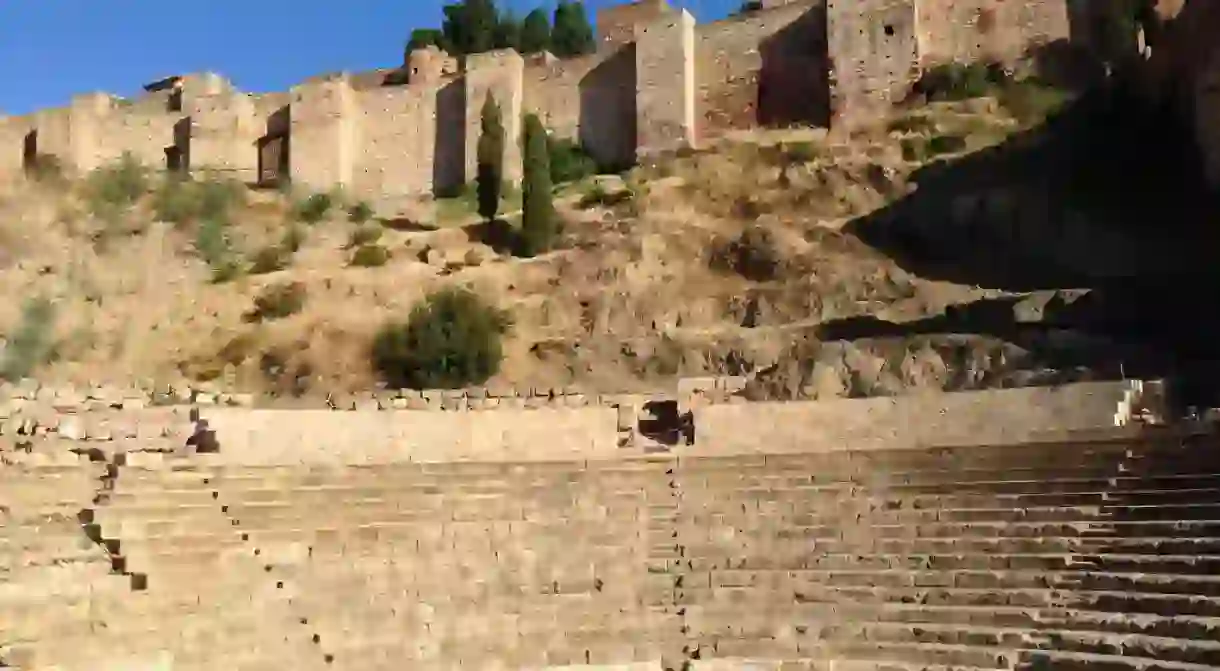The Most Impressive Buildings in Málaga, Spain

The beautiful port city of Málaga is not short on ancient and impressive structures with which to vow visitors. From its stunning Moorish fortress – the best-preserved of its kind in Spain – to its Roman amphitheater, this vibrant and exciting city is full of architectural masterpieces to explore and admire.
Cathedral
Cathedral, Church, Mosque

Málaga’s great cathedral, one of the city’s most impressive monuments, is known locally as ‘La Manquita’, or ‘The One-Armed Woman’, due to its uncompleted second tower. Built between 1528 and 1782 near to the site of an early Almohad mosque, original plans for this huge Renaissance and Baroque-style cathedral had included two towers, but the second was never built because of a lack of funds. Construction dragged on for over two hundred years before the Mayor of Málaga commissioned Aragonese architect José Martín de Aldehuela (1729–1802) to finish the cathedral off in the late 18th century. Aldehuela’s other iconic contributions to the province include Ronda’s stunning ‘New Bridge’ and bullring.
Alcazaba
Archaeological site, Building, Museum

The Moorish rulers of southern Spain built the Alcazaba fortress on the remains of a Roman fortification around the middle of the 8th century. Though it doesn’t have the grand interiors of its more famous counterpart in Granada, this amazingly preserved fortress is every bit as beguiling as the Alhambra and is well worth setting aside a good couple of hours for: indeed, it is the best-preserved Moorish citadel in Spain. The fort was extensively rebuilt by the Sultan of Granada in the 11th century and connected up to the nearby Gibralfaro Castle by a Nasrid King in the 14th century. One of the most notable features of the Alcazaba is how effortlessly it fits into the hillside above Málaga, while inside it is a maze of secret courtyards, open-air corridors and battlements that command incredible views out to sea and over the city’s rooftops.
Gibralfaro Castle

The Port
Building, Museum

Roman Theatre

Málaga Bullring
The best views of Málaga’s attractive 19th-century bullring are from the turrets of the Gibralfaro castle, from where you can see it tucked in amongst high-rise apartment blocks just a stone’s throw from the sea. Work on this understated, elegant plaza began in 1874 and it staged its first bullfight two years later; nowadays, it is one of the the most important bullrings in Andalusia and holds prestigious bullfights during Easter and throughout Málaga’s riotous August fiesta. Tours of the ring are available, and it also houses a museum exploring the history of the controversial spectacle that takes place within.
Plaza de Toros de Málaga, 8 Paseo Reding, Málaga +34 952 06 98 23














